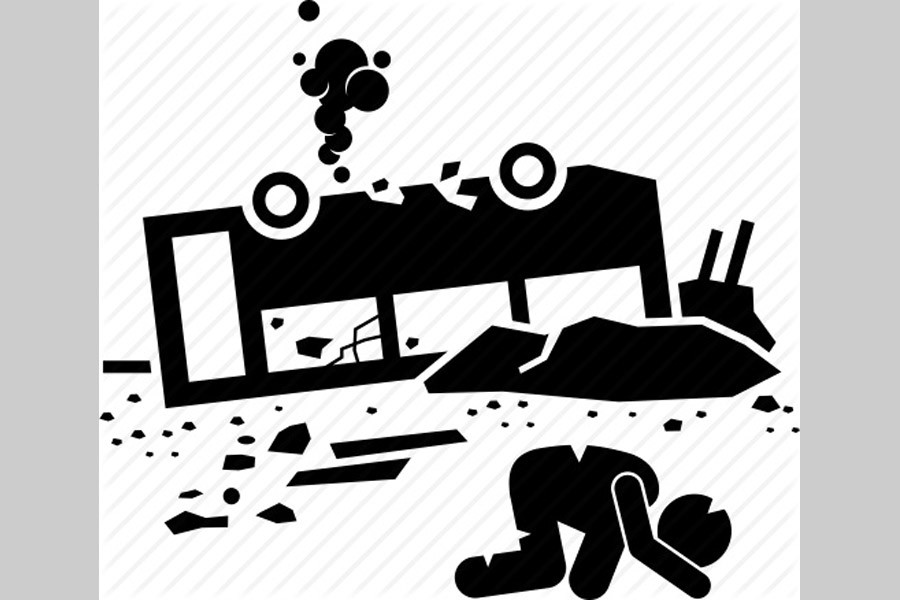The very number -- 221 deaths in road accidents over a period of just 12 days across the country -- is terrifying. Those people died and nearly 700 more were injured in 185 road accidents happening between May 30 and June 10 last. The majority of the victims were Eid-goers. The statistics were compiled by a passenger rights protection organisation on the basis of reports published in national and regional newspapers and online news portals. Since none of the relevant official entities has contested the data on road accidents until now there should be valid reason to accept those as authentic. In fact, road accident casualties are likely to be more as a number of incidents go unreported.
The number of people using road transports on the occasion of Eid celebrations goes up manifold. Some Eid-goers are found to be desperate to reach their destinations. They even do not bother taking risks while climbing the bus and train rooftops. Such rush of passengers on the occasion of major religious celebrations is a usual scenario in many countries. But nowhere the onrush of people leads to so many deaths on the roads and highways.
Death in road accidents has rather become a daily event. Last year, according to data compiled by another passenger welfare organization, a total of 7,221 people died and 15,500 were injured in more than 5,500 road crashes. However, the official figures are far less, almost half of what rights organizations have compiled. The number and frequency of road accidents have risen to such an extent that those do not stir up that much of emotion among the people anymore. Nor does it evoke any emergency response from the policymakers. An air or a launch accident that leaves far fewer numbers of people dead is discussed far more intensely than many major road accidents. This is because these accidents do not take place every day.
There is no denying that the government has attached particular priority to the development of infrastructures in the road transport sector. It has been making hefty allocations for the sector every year. But much of the gains have been overshadowed by the unabated rise in the number of road accidents, mainly due to unruly behaviour of a section of transport owners and workers. The popular perception is that the government is unduly soft towards delinquent road transport owners and workers because of their links with the ruling party. The responsibility to prove that the particular perception is wrong lies with the government, none else.
However, one can hardly ignore the factors that do contribute to the increase in the number of road crashes. The factors include the lack of awareness among pedestrians about road-safety and the faulty construction of roads and highways. The need for educating the people about road safety cannot be overemphasised. It will be thus proper to educate the primary and secondary level students on road safety and curricula need to be prepared accordingly.
What is, however, far more important is getting the properly trained drivers behind the steering of public transports. The Bangladesh Road Transport Authority (BRTA) is entrusted with the responsibility of doing that along with the task of overseeing the fitness of motor vehicles. Once this important organisation decides to be true to its duties and responsibilities, much of the problems stalking the transport sector would be resolved.


